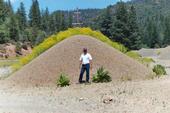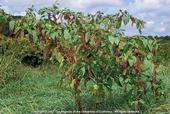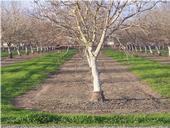- Posted By: Chris McDonald
- Written by: Chris McDonald
I’ve noticed a slow and increasing trend lately, the level of communication about weeds has been on the decline. Now I have very little data outside of Southern California to back up my assertion, so I look to you to provide a sense of optimism. Your comments to counter my observations are greatly appreciated.
Several state and federal agencies along with local governments and organizations have been, one by one, missing weed management meetings or local workshops and symposia. Now this is not something entirely new or unpredicted, attending an invasive plant management group is certainly not as fun as being in the field for the day. It is important work: organizing regional projects, deciding which grants to write,...
- Posted By: Wendy West
- Written by: Wendy West, UC Cooperative Extension-Central Sierra and Garrett Dickman, Yosemite National Park

As wildland weed management and eradication projects fall to the economic “hatchet”, one vital program continues as a standout---preventing the introduction and spread of invasive weeds can yield a lot of bang for the buck!
Invasive weed seeds and other reproductive parts are often moved to new locations via: imported gravel and fill dirt; vehicles and equipment; or in erosion control materials. Treating weeds over a large area is expensive and often impossible, so land managers can look to weed prevention as a cost-effective...
- Author: Guy B Kyser

A neighbor asked me to identify a robust perennial that keeps coming up in his garden. It had long, tropical-looking leaves and floppy racemes with small white flowers. This was a new one for me. Turned out it was common pokeweed (Phytolacca americana), a native of eastern North America. In the south some people eat it (poke salad), and a few southerners probably brought it west as a garden vegetable. But the whole plant is toxic if improperly prepared, so it’s the fugu of weeds.
A couple of weeks later my daughter brought home a stalk of purple berries and asked if she could eat them. “No,” I said, “they contain numerous saponins and oxalates.” I began...
- Posted By: Brad Hanson
- Written by: Rebecca Miller-Cripps
Article originally posted on the UC ANR Green Blog. Written by Rebecca Miller-Cripps and reposted with permission. Brad
Weeds, weeds, weeds! Have you noticed? This has been a banner year for weeds. Puncturevine where I’ve never seen it before. Garden soil covered with common purslane (at least it’s good in salads). And solid stands of yellow starthistle everywhere!
- Posted By: Brad Hanson
- Written by: Kurt Hembree, Ryan Allen, Curtis Rainbolt, Jim Mueller et al., Richard Smith and Larry Bettiga, Emilio Laca et al., and others

Today I thought I'd put in a plug for the California Weed Science Society (CWSS) annual meeting to be held January 23-25, 2012 in Santa Barbara. Information on the meeting can be found in the October newsletter at: http://www.cwss.org/PDF/CWSS_Fall_2011_Newsletter.pdf and links to the Program and Registration can be found at: http://www.cwss.org/. The main CWSS page also has information on a new Photo Contest, the Student Paper and Poster Contest, the Student Scholarship Program, and Awards and Honors presented to students and members last year.
Also, I've attached a link to the


